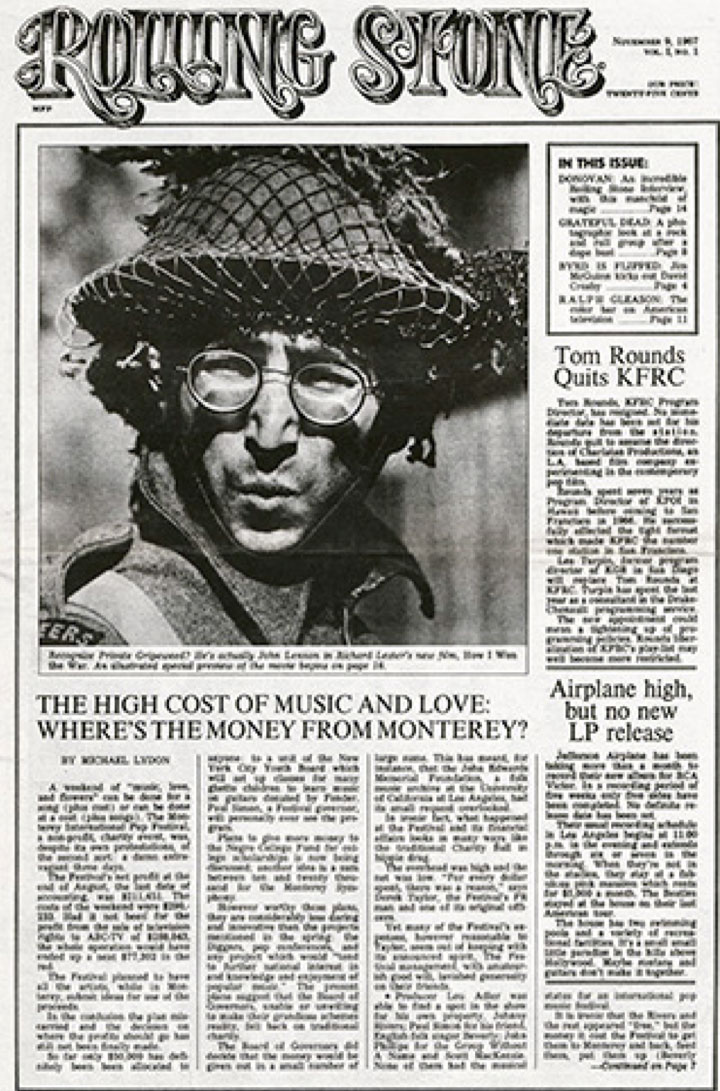 | November 9, 1967:Rolling Stone magazine hit newsstands |
The iconic magazine has become “a rock and roll institution” GB and “the most authoritative publication on rock and roll music.” ABC It was launched in San Francisco in 1967 by still-editor and publisher Jann Wenner along with music critic Ralph J. Gleason. Wenner was a transplanted New Yorker who’d moved west to go to Berkeley. As a student, he became a political activist and aspiring journalist. Gleason was a jazz critic with the San Francisco Chronicle who helped Wenner land a job after he dropped out of college in 1966. In the first issue, Wenner described it as “sort of a magazine and sort of a newspaper” AG which was “not just about the music, but about the things and attitudes that music embraces.” GB The name for the magazine was inspired by the phrase “a rolling stone gathers no moss.” Of course, the famed British rock group of the same name also figured into the mix, as did the Muddy Waters’ song from which they took their name. In addition, Bob Dylan’s “first rock and roll record” was called “Like a Rolling Stone”. AG The first issue featured a cover image of John Lennon from his movie How I Won the War. Some of the pieces in that issue included an investigation on what happened to profits from the Monterey Pop Festival, the split between the Byrds and David Crosby, Jefferson Airplane’s future plans, and a report that The Who’s “I Can See for Miles” was released that week. The magazine has ironically received criticism for 1) a bias toward the 1960s and 1970, and 2) an attempt in more recent years to pander to younger audiences. Some bands, such as Led Zeppelin, were largely written off in their active years but celebrated years later. Also, some albums were rated as average or even poor initially (Nirvana’s Nevermind, The Beatles’ Let It Be), but in subsequent issues were celebrated as classics. In addition, the magazine’s liberal politics have occasionally come under fire. The format has undergone several changes over the years. It started as a black-and-white print tabloid newspaper style publication. From 1973-1980, it was printed on newsprint paper size and then became a 10” x 12” magazine. In 2008, it switched to the smaller, standard-format size. As of April 19, 2010, it began featuring the entire collection archived online. It now operates under a subscription model meaning readers have to be paid members to access some content. The bi-weekly publication has done more than a thousand issues and has a circulation of 1.4 million. Resources and Related Links:
First posted 11/9/2011; updated 11/5/2023. |









No comments:
Post a Comment